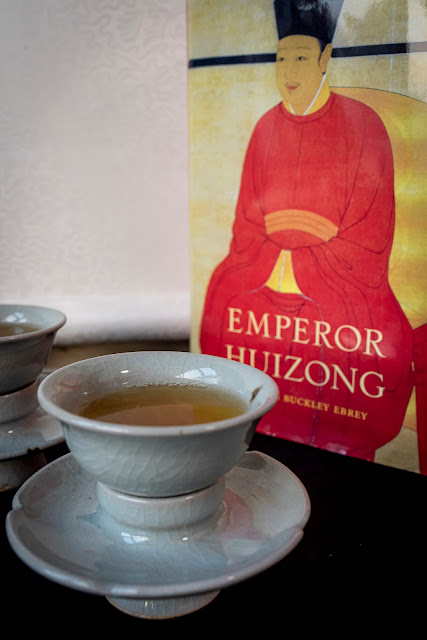Today, I had the pleasure of giving this tea class to Cindy, an American tea brewer who started to brew seriously some 5 years ago. She asked for a specific class on brewing Taiwanese Oolongs, because they are her favorites. So, I started with the lightest aromas and the most popular type of Taiwan Oolong: lightly oxidized, rolled and not roasted. In this category, we brewed my new
Si Ji Chun, this
Alishan Jinxuan and
Alishan Qingxin Oolong. For them, the trick is to do 2 things well: preheating the gaiwan and lid, and letting the leaves dance with the low and fast pour in order to fully unfurl the leaves in the first brew.
Then I also demonstrated how to brew
this Wenshan Baozhong. The pour is different. No swirl, but on the leaves. However, the preheating doesn't change. It's necessary for all teas, especially with a porcelain gaiwan and during a the cold season.
Not using a pitcher helps obtaining a higher temperature for the brew.
We the moved to
this Dong Ding style rolled Oolong. There's less swirling of the leaves, because of the roast. The goal remains to open the leaves evenly in the gaiwan. The color of the brew on the lid helps to determine when the tea is ready better than a timer.
And we finished with the most famous high oxidation Oolong from Taiwan:
imperial Oriental Beauty from Hsin Chu from summer 2020. Here again, the brewing is a little bit different from Baozhong. The first brew should be shorter, because the finest first aromas are particularly enjoyable.
Also, we use fewer leaves, because they are mostly buds and very concentrated.
I liked giving this tea class, because I saw that Cindy made a lot of progress and my explanations made sense to her. Cindy has been on a long tea trip, met many tea makers in Taiwan and China recently. But despite my simple tea table, the fact that I speak English and have studied tea for a long time helped me to make this lesson memorable for her.


























































